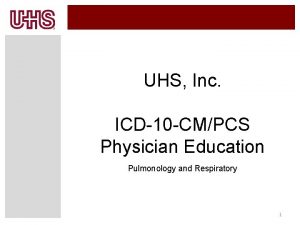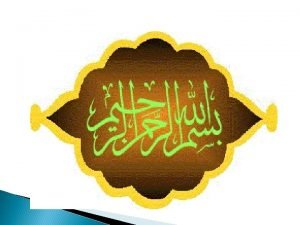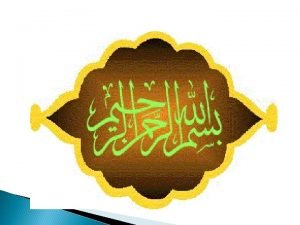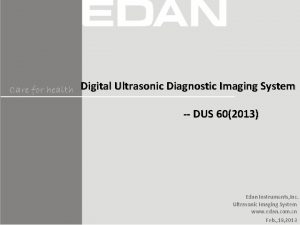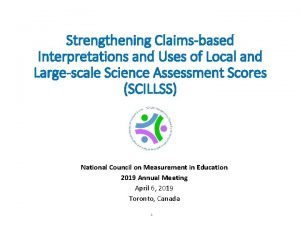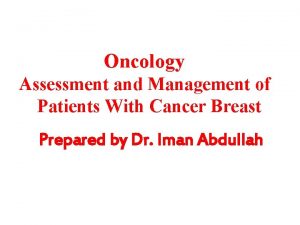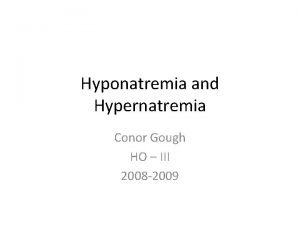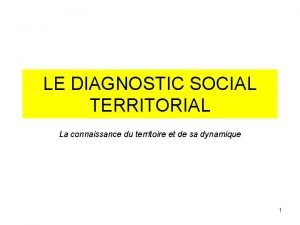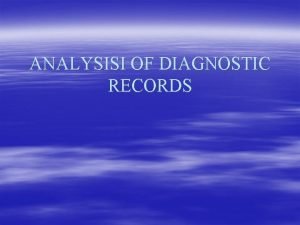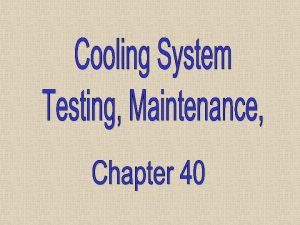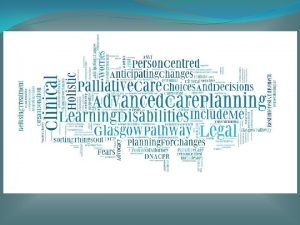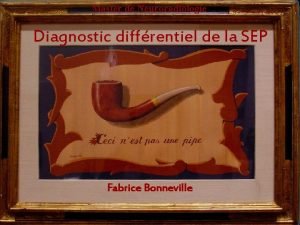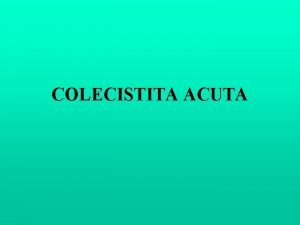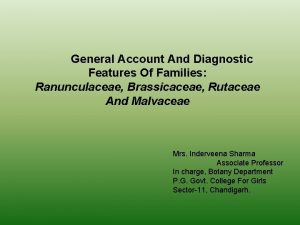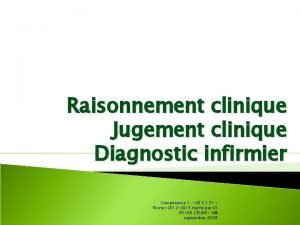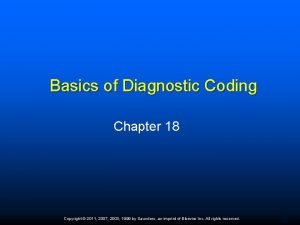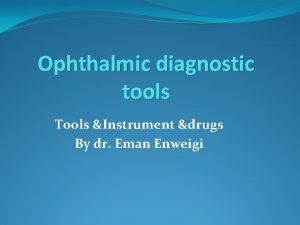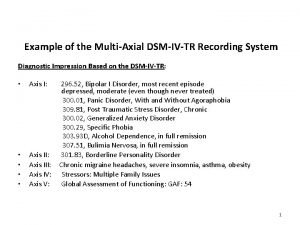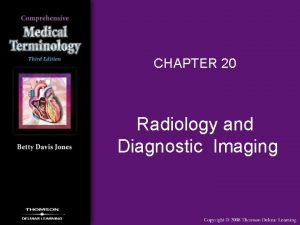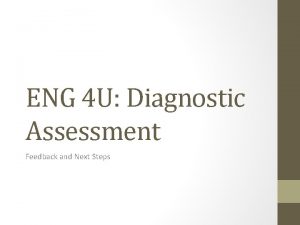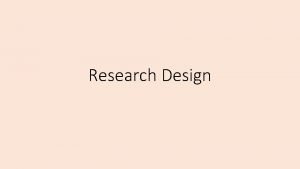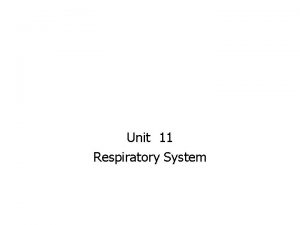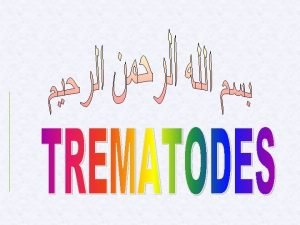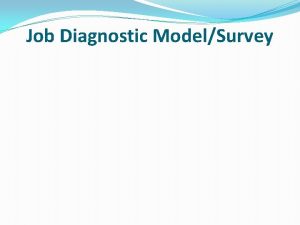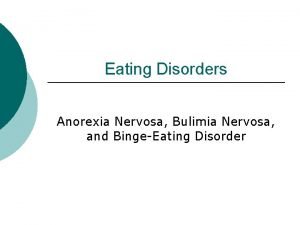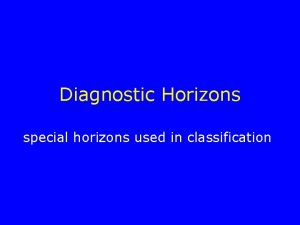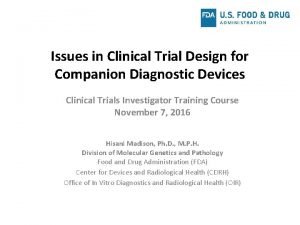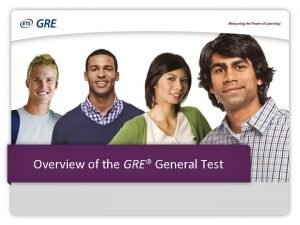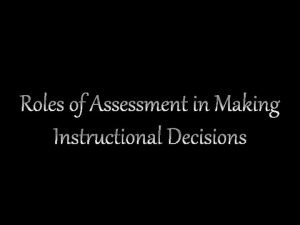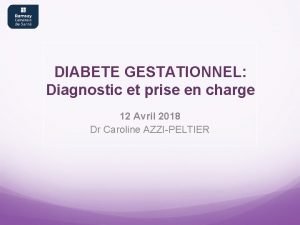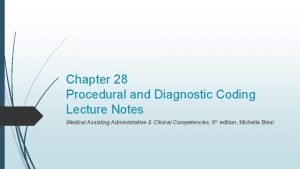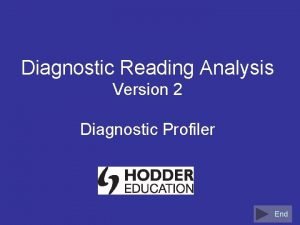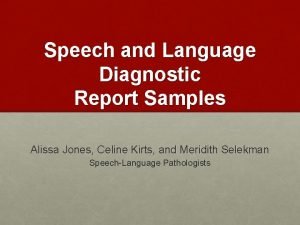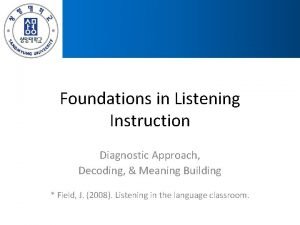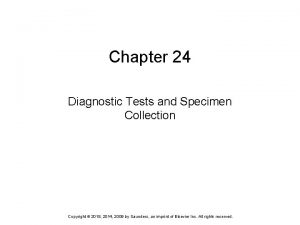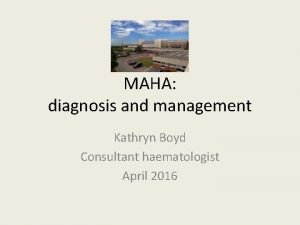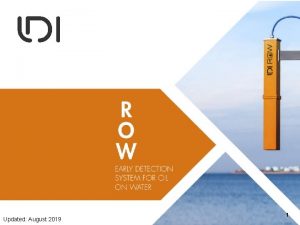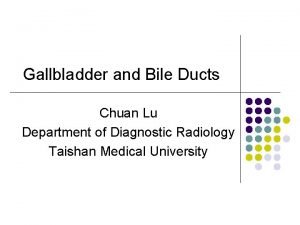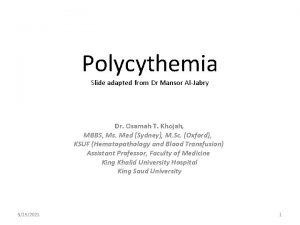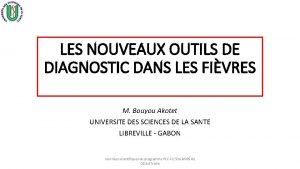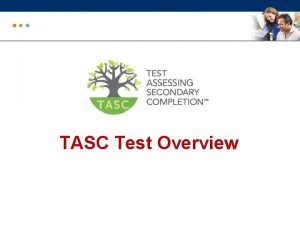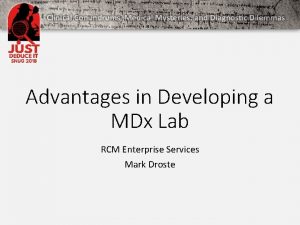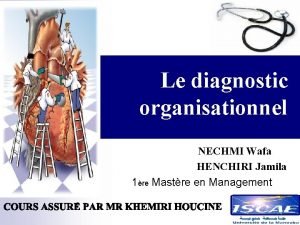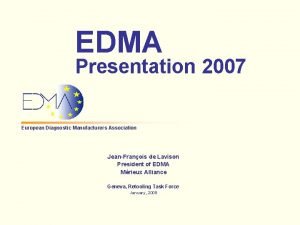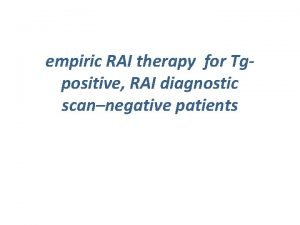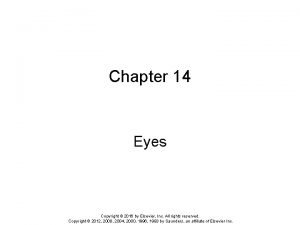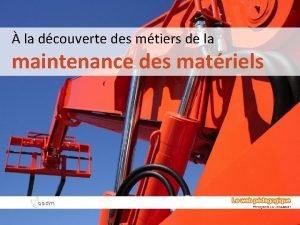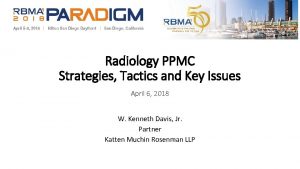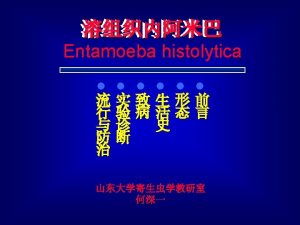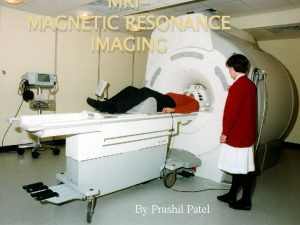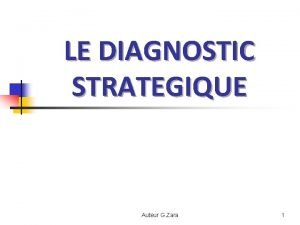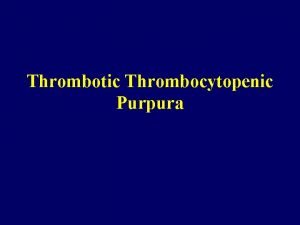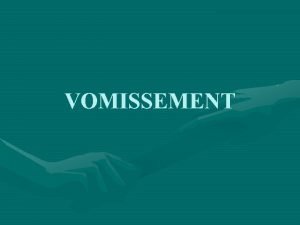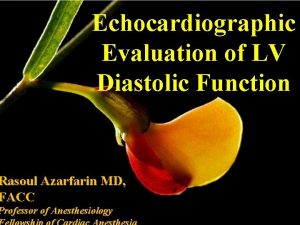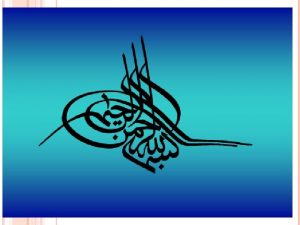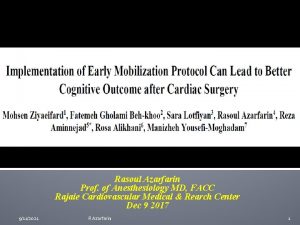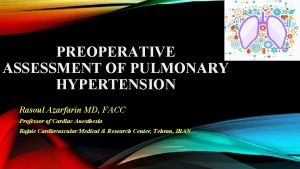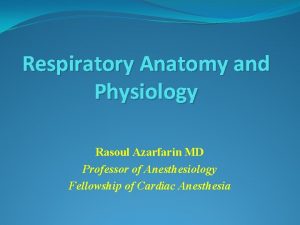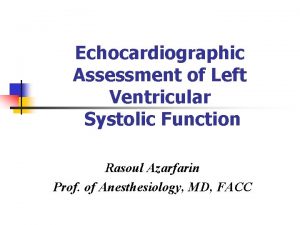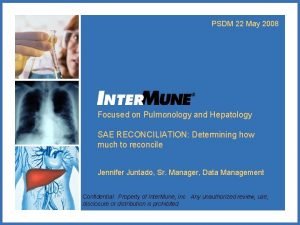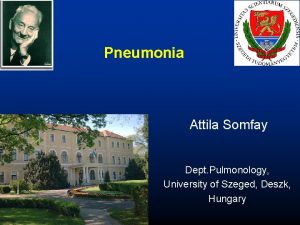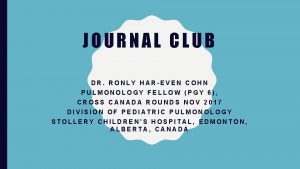Diagnostic methods in pulmonology RASOUL ALIANNEJAD Diagnostic methods





































































- Slides: 69

Diagnostic methods in pulmonology RASOUL ALIANNEJAD

Diagnostic methods in pulmonology

Diagnosis Prognosis Treatment

Diagnostic Methods Tools/tes t process

Symptoms Signs disease

Hypothesis Test Diagnosis

• Hypothesis DDx Physical ex • Hypothesis History • Hypothesis generation/revis ion Problem list • Testing hypothesis Diagnostic tests Final diagnostic

Data Hypothesis generation Diagnosis Patient Questions Data gathering Hypothesis evaluation

History & PHx Anatomical investigation functional investigation Infectious test Integrative test : CPET, PSG • Radiology imaging • Bronchoscopy • Ventilation tests • Perfusion tests • Diffusion tests • Sputum based • Blood samples based

Taking history

Physical examination


Anatomical investigation

Chest X-ray







Chest CT scan

CHEST CT Angiography

Ventilation/perfusion scan

CHEST PET/CT scan

Fiberoptic bronchoscopy

Fiberoptic bronchoscopy(FOB)

Endobronchial ultrasound(EBUS)

Thoracentesis

Plural biopsy

Medical Thoracoscopy

Mediastinoscopy

Functional investigation

History & PHx • Radiology imaging Anatomical investigation • Bronchoscopy functional investigation Infectious test Integrative test : CPET, PSG • Ventilation tests • Perfusion tests • Diffusion tests • Sputum based • Blood samples based

What is Spirometry? Spirometry is a method of assessing lung function by measuring the volume of air the patient can expel from the lungs after a maximal expiration.

Why Perform Spirometry? Confirm presence of airway obstruction Assess severity of airflow obstruction Monitor disease progression Assess response to therapy Assess prognosis (FEV 1)

Flow Measuring Spirometer

Small Hand-held Spirometers

muscles of respiration inspiratory muscles neck musculature expiratory muscles internal intercostal abdominal musculature external intercostal diaphragm

maximal deep inspiration sternocleidomastoideus scalenis

the limits of breathing maximal inspiration maximal expiration

mechanics during spirometry volume neck muscles elasticity diaphragm elasticity & abdominal muscles diaphragm abdominal muscles time

maximal movements of the chest “vital capacity” maximal inspiration TLC-niveau maximal expiration RV-niveau

limits of the vital capacity volume deep inspiration _ VC visceral pleura VC deep expiration + time _ 0 _ + + intrathoracic pressure airway closure

trumpet or funnel model sum of the transverse areas of each branching generation amount crosssection total area trachea 0 convection 3 cm 2 segmental bronchi 3 diffusion 1 0 flow speed 20 0, 15 cm 2 6 cm 2 respiratory bronchioli 18 2. 105 0, 00195 cm 2 390 cm 2

airflow PPAlv VV PAtm Poiseuille’s law alveolar pressure muscular strength airflow is dependent on: elasticity resistance airway collapse airway obstruction

alveolar and intrathoracic pressure PAlv Palv = Pint. th = Pcw + Pmusc + Plung

expiratory airway collaps PAlv pressure PAtm transmural pressure Plung Pcw intra-thoracic pressure Equal Pressure Point Pmusc alveolus airway mouth

airways and lung parenchyma connective tissue cartilage smooth muscle alveolar walls loss alveolar septa


airway mechanics in lung emphysema flow + Plung + P volume expiration Plung Pcw Pmusc alveolus airway mouth F-V curve in lung emphysema inspiration

Lung Volume Terminology Inspiratory reserve volume Total lung capacity Inspiratory capacity Tidal volume Expiratory reserve volume Residual volume Vital capacity

Normal Trace Showing FEV 1 and FVC Volume, liters 5 4 FEV 1 = 4 L 3 FVC = 5 L 2 FEV 1/FVC = 0. 8 1 1 2 3 4 5 Time, seconds 6

Flow Volume Curve Maximum expiratory flow (PEF) Expiratory flow rate L/sec TLC FVC Inspiratory flow rate L/sec Volume (L) RV

FEV 1 FVC • Forced expiratory volume in one second • Forced vital capacity: • The total volume of air that can be forcibly exhaled in one breat FEV 1/FVC • The fraction of air exhaled in the first second relative to the total volume exhaled MEFR • Derived from the mid portion of the flow volume curve VC • A volume of a full breath exhaled in the patient’s own time and not forced. Often slightly greater than the FVC, particularly in COPD

Criteria for Normal Post-bronchodilator Spirometry • FEV 1: % predicted > 80% • FVC: % predicted > 80% • FEV 1/FVC: > 0. 7

Normal Trace Showing FEV 1 and FVC Volume, liters 5 4 FEV 1 = 4 L 3 FVC = 5 L 2 FEV 1/FVC = 0. 8 1 1 2 3 4 5 Time, seconds 6

Spirometry: Obstructive Disease Volume, liters 5 4 Normal 3 FEV 1 = 1. 8 L 2 FVC = 3. 2 L 1 FEV 1/FVC = 0. 56 1 2 3 4 5 Time, seconds 6 Obstructive

Criteria: Restrictive Disease • FEV 1: % predicted < 80% • FVC: % predicted < 80% • FEV 1/FVC: > 0. 7

Spirometry: Restrictive Disease Normal Volume, liters 5 4 3 Restrictive FEV 1 = 1. 9 L 2 FVC = 2. 0 L 1 FEV 1/FVC = 0. 95 1 2 3 4 5 Time, seconds 6

Flow Volume Curve Patterns Obstructive and Restrictive Severe obstructive Volume (L) Reduced peak flow, scooped out midcurve Restrictive Expiratory flow rate Obstructive Volume (L) Steeple pattern, reduced peak flow, rapid fall off Volume (L) Normal shape, normal peak flow, reduced volume

Spirometry: Abnormal Patterns Restrictive Time Slow rise, reduced volume expired; prolonged time to full expiration Mixed e Volume Obstructive Time Fast rise to plateau at reduced maximum volume Time Slow rise to reduced maximum volume; measure static lung volumes and full PFT’s to confirm

Body Plethysmography TGV =FRC TLC RV Raw

Lung diffusion capacity(DLco)

Arterial blood gas(ABG) Pa. O 2 Pa. CO 2 PH HCO 3

Pulse oximetry

Ergospirometry VO 2 VCO 2 pulse Breathing reserve EQ CO 2 EQ O 2 ET CO 2

Polysomnography

Sputum examination

Sputum culture
 Ment o medical term
Ment o medical term Uhs pulmonology
Uhs pulmonology Mcps anatomy
Mcps anatomy Fcps pulmonology
Fcps pulmonology Fabrication of wax pattern
Fabrication of wax pattern Digital ultrasonic diagnostic imaging system
Digital ultrasonic diagnostic imaging system Formative assessment
Formative assessment Nursing care plan for breast cancer ppt
Nursing care plan for breast cancer ppt Free water deficit
Free water deficit Diagnostic social territorial
Diagnostic social territorial What are cdts
What are cdts Tanaka and johnston space analysis
Tanaka and johnston space analysis Mshowup
Mshowup Diagnostic overshadowing definition
Diagnostic overshadowing definition Sep diagnostic différentiel
Sep diagnostic différentiel Bell mason diagnostic
Bell mason diagnostic Diagnostic infirmier anxiété
Diagnostic infirmier anxiété Piocolecist
Piocolecist Classification of ranunculaceae
Classification of ranunculaceae Problème réel et potentiel infirmier
Problème réel et potentiel infirmier Diagnostic prescriptive method
Diagnostic prescriptive method Diagnostic coding chapter 18
Diagnostic coding chapter 18 Ophthalmic diagnostic agents
Ophthalmic diagnostic agents Multiaxial diagnostic system
Multiaxial diagnostic system Rah diagnostic imaging
Rah diagnostic imaging Syphilis diagnostic test
Syphilis diagnostic test Diagnostic assessment examples
Diagnostic assessment examples Meaning of research design
Meaning of research design Diagnostic interne
Diagnostic interne Diagnostic test of respiratory system
Diagnostic test of respiratory system Fasciolopsis buski diagnostic stage
Fasciolopsis buski diagnostic stage Hackman and oldham model
Hackman and oldham model Classroom diagnostic tools results meaning
Classroom diagnostic tools results meaning Risks of bulimia
Risks of bulimia Oppositional defiant disorder in adults
Oppositional defiant disorder in adults Diagnostic horizons
Diagnostic horizons Companion diagnostic regulation
Companion diagnostic regulation Gre benefits
Gre benefits Formative diagnostic and summative assessment
Formative diagnostic and summative assessment Surgical suffixes examples
Surgical suffixes examples Diabète gestationnel diagnostic
Diabète gestationnel diagnostic Diagnostic services careers
Diagnostic services careers Chapter 28 procedural and diagnostic coding
Chapter 28 procedural and diagnostic coding Diagnostic reading analysis
Diagnostic reading analysis Sample diagnostic report for speech-language pathology
Sample diagnostic report for speech-language pathology Diagnostic testing in education
Diagnostic testing in education Iready diagnostic scores by grade
Iready diagnostic scores by grade Diagnostic approach definition
Diagnostic approach definition Chapter 24 diagnostic tests and specimen collection
Chapter 24 diagnostic tests and specimen collection Dr kathryn boyd
Dr kathryn boyd Pegacloud
Pegacloud Remote desktop services diagnostic tool
Remote desktop services diagnostic tool Laser diagnostic instruments
Laser diagnostic instruments Gallbladder length
Gallbladder length Polycythemia vera diagnostic criteria 2021
Polycythemia vera diagnostic criteria 2021 Diagnostic
Diagnostic Diagnostic clinical landscape
Diagnostic clinical landscape Worx wg794
Worx wg794 Tasc distinguished achievement
Tasc distinguished achievement Lab rcm
Lab rcm Mintzberg
Mintzberg European diagnostic manufacturers association
European diagnostic manufacturers association Rai diagnostic
Rai diagnostic Diagnostic positions test normal findings
Diagnostic positions test normal findings Diagnostic interne
Diagnostic interne Ppmc diagnostic imaging
Ppmc diagnostic imaging Amoebiasis in babies
Amoebiasis in babies Diagnostic imaging
Diagnostic imaging Zara ressources immatérielles
Zara ressources immatérielles Ttp diagnostic criteria
Ttp diagnostic criteria

